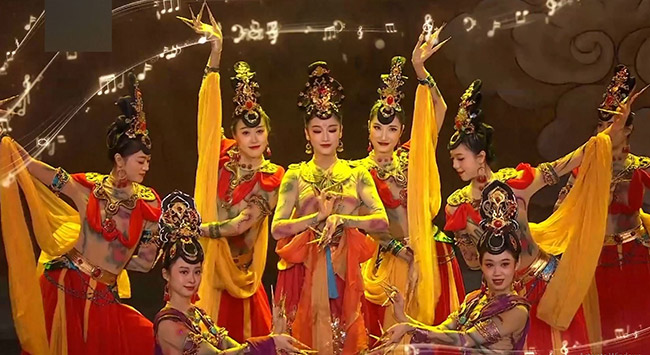Chinese Culture
Chinese culture is one of the world’s oldest and continuously developing civilizations. For over five thousand years, it has evolved in its own unique way and has deeply influenced the history, politics, philosophy, literature, art, religion, and daily life of Asia and the world. The cultural heritage of China is so vast and diverse that it is nearly impossible to describe it in just a few words. From ancient times, Chinese culture has flourished in many areas. Below are some of its key aspects:
Philosophy and Thought
The foundations of Chinese culture are largely built upon Confucianism, Taoism, and Buddhism.
Confucianism (Confucius, 551–479 BCE): Emphasizes morality, family responsibility, respect, and social order. Reverence for education and elders are its central principles.
Taoism (Laozi): Focuses on living in harmony with nature, simplicity, and the idea of Wu Wei (non-action yet achieving results).
Buddhism (introduced from India): Arrived in China during the 1st century CE and gradually became significant under various dynasties. It is based on self-cultivation, rebirth, and liberation.
Language and Script
The Chinese language, especially Mandarin, is the most widely spoken language in the world. The Chinese script (Han characters / 汉字) is logographic, representing words or syllables, with around 3,000–5,000 characters used in daily life.
Chinese calligraphy (书法) is a highly esteemed ancient art form, regarded as not just writing but also a form of self-expression and meditation.
In the early 20th century, most of the population was still illiterate, and many regional spoken languages (Mandarin, Wu, Yue/Cantonese, Min Nan, Jin, Xiang, Hakka, Gan, Hui, Ping, etc.) made communication difficult between regions. However, written Chinese allowed unified communication across the empire, enabling government decrees and documents to be transmitted widely. Reformers later adopted Beijing-based Mandarin as the national spoken language. After the May Fourth Movement, classical Chinese was replaced by modern vernacular writing, reflecting everyday speech.
Religious Beliefs and Practices
Religion in Chinese culture is diverse. Alongside traditional religions, ancestor worship and belief in nature and spirits are important. Many people traditionally worship a variety of gods and spirits.
Spiritual practices such as Feng Shui and the I Ching remain widely popular.
Festivals and Traditions
China’s vibrant and meaningful festivals are central to its cultural identity:
Chinese New Year (Spring Festival): Celebrated at the lunar new year, lasting 15 days, featuring family gatherings, the color red, fireworks, and lion dances.
Dragon Boat Festival: Honors the poet Qu Yuan, marked by dragon boat races and eating sticky rice dumplings (zongzi).
Mid-Autumn Festival (Moon Festival): Celebrated during the full moon, when families gather and enjoy mooncakes together.
Literature and History
Chinese literature is extremely rich, reflecting different schools of thought across the ages.
Shijing (Book of Songs): The earliest anthology of Chinese poetry.
The Four Great Classical Novels – Romance of the Three Kingdoms, Water Margin, Journey to the West, and Dream of the Red Chamber – represent the peak of Chinese classical literature.
Art and Craft
Chinese art demonstrates remarkable diversity:
Porcelain: World-famous and synonymous with China itself.
Painting: Often combining landscapes, birds, flowers, and calligraphy in unique compositions.
Silk: Chinese silk became globally renowned through the Silk Road.
Music and Dance
Traditional Chinese music features instruments such as the guzheng, erhu, and pipa. Chinese opera, especially Beijing Opera, combines music, storytelling, performance, and elaborate costumes.
Architecture
Traditional Chinese architecture features curved roofs, raised platforms, and wooden structures.
The Great Wall of China: A massive defense system and architectural marvel.
Palaces and temples: Including Beijing’s Forbidden City and the Temple of Heaven.
Food and Cuisine
Chinese cuisine is diverse, regionally distinctive, and prepared with unique methods:
Sichuan cuisine: Famous for its bold and spicy flavors.
Cantonese cuisine: Known for being lighter and more delicate.
Chopstick use is an integral part of Chinese dining culture.
Contemporary Cultural Influence
Modern China plays a crucial role in the global economy while preserving much of its heritage. Chinese cinema, martial arts (kung fu), fashion, architecture, and tea culture have had worldwide influence.
Chinese culture is not only significant for the Chinese people but also an invaluable part of human civilization. It is a unique blend of ancient philosophy, literature, art, and religious beliefs that remains alive and relevant today. While embracing modernity and technology, Chinese society also provides an outstanding example of preserving its history and traditions.
References:
Britannica.com
ChinaCulture.org
UNESCO Intangible Cultural Heritage
BBC Chinese Culture Reports

